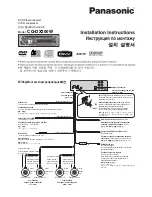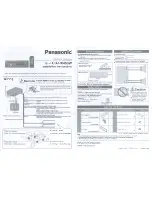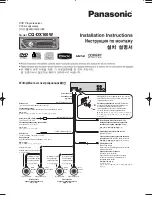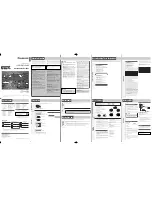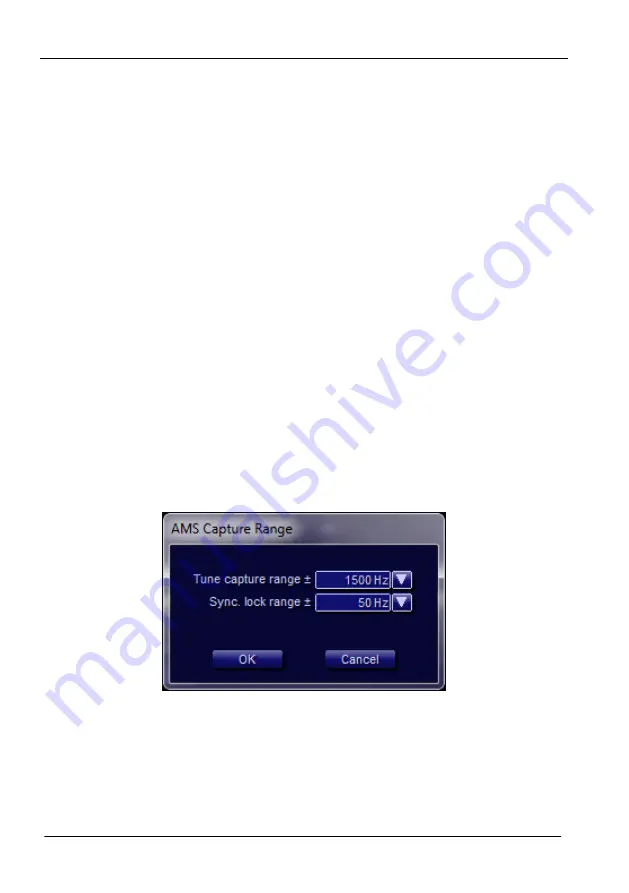
WiNRADiO G33DDC HF Receiver
92
While the buffering removes drop-outs, on the other hand it introduces a
certain delay (latency) to the output audio.
The
Min. buffer size
and
Max. buffer size
parameters can be adjusted to
minimize the latency for a particular computer system.
The
Min. buffer size
parameter can be adjusted to the minimum acceptable
value before significant distortion or drop-outs develop. On the other hand, the
Max. buffer size
parameter determines the maximum allowable latency.
AMS Capture Range
In the AMS mode, there is a certain "capture range", a frequency range within
which the receiver will capture the signal and lock to synchronization. If you
are tuning to a new signal, this
Tune capture range
is initially quite wide,
within ±1.5 kHz (factory default value) from the actual signal frequency, to
enable easy tuning by pointing and clicking near the peak in the DDC
spectrum, or dragging the filter passband area in the demodulator spectrum.
You can adjust the
Tune capture range
to a different width for tuning
convenience.
Once locked to a signal, the capture range automatically reduces to ± 50 Hz
(factory default value) from the signal frequency. The reason for such
reduction is to avoid "kidnapping" of the synchronization frequency by a
nearby strong signal if the carrier signal fades, as may happen especially with
long-distance reception due to ionospheric effects.































